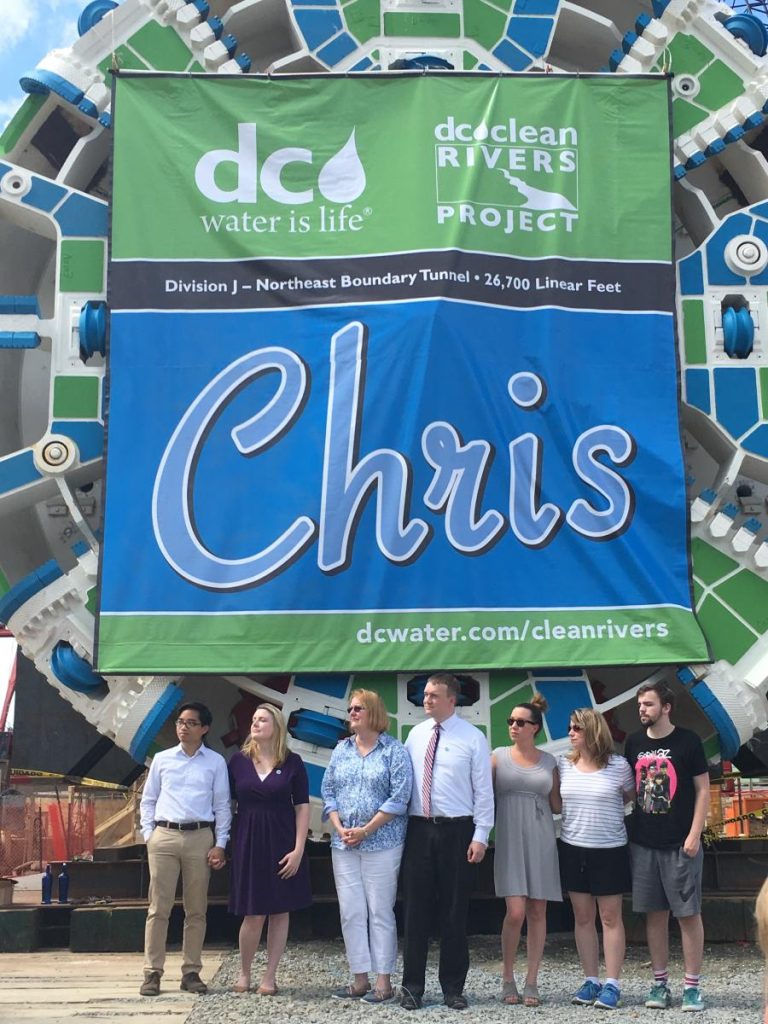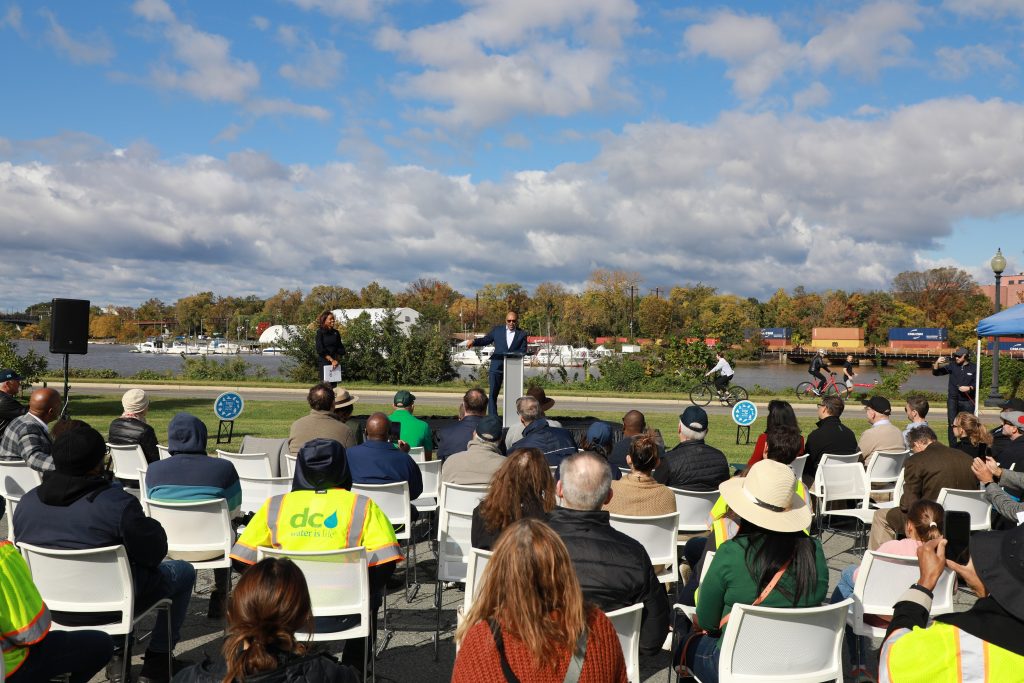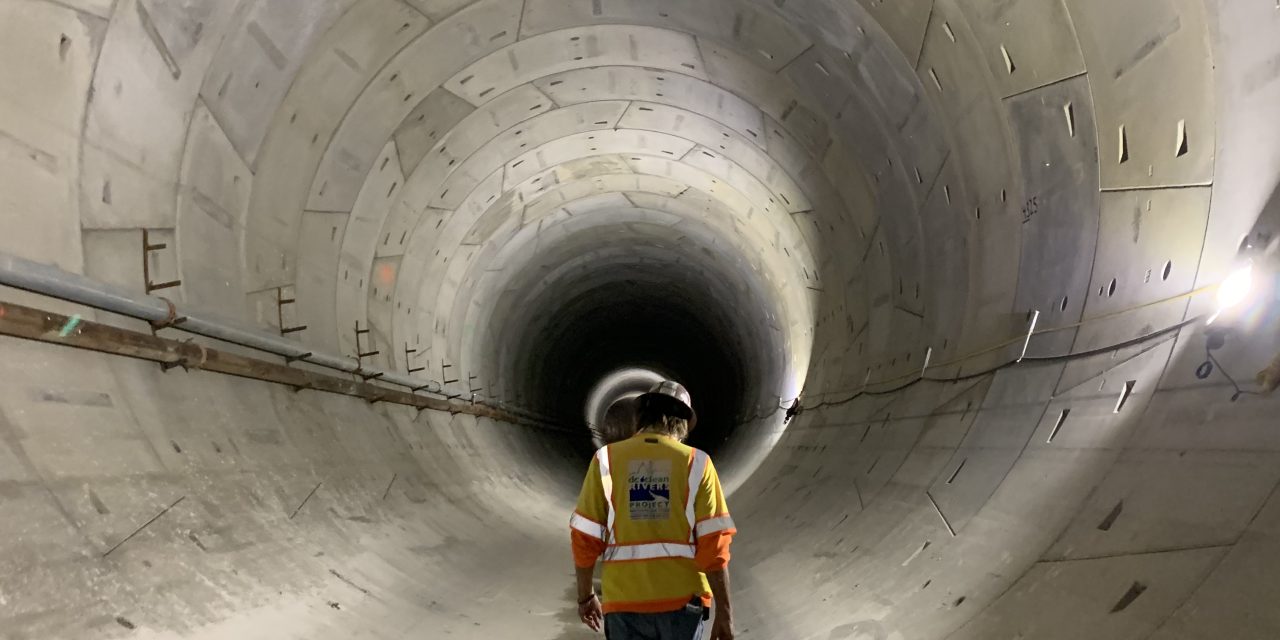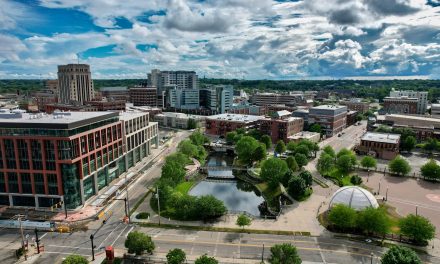During an October 21 ceremony, DC Water (Washington, D.C.) representatives officially cut the ribbon on the Northeast Boundary Tunnel (NEBT) project. The tunnel, boasting a 340 million-L (90 million-gal) capacity for wastewater and stormwater, promises to reduce combined sewer overflows (CSOs) dramatically in parts of Washington, D.C., that are served by 19th century conveyance systems.
Putting the NEBT into service marks a milestone for the city’s long-term plans to control CSOs — the focus of a 2005 consent decree among the city, DC Water, the U.S. Environmental Protection Agency, and the U.S. Department of Justice. The consent decree required DC Water to build a tunnel system meeting the goals of the NEBT by 2025.
“The completion of the Northeast Boundary Tunnel, more than a year ahead of schedule, delivers on our promise to help clean up the Anacostia River and provide relief for residents who have experienced flooding in their homes and communities,” said DC Water CEO and General Manager David Gadis during the ceremony. “We know the construction over the past 5 years has tested everyone’s patience, but this project will return tremendous benefits with cleaner water and an improved quality of life in many neighborhoods.”
Addressing Water Woes Along the Anacostia
A history of wastewater discharges during heavy storms underscores how the Anacostia River, a tributary of the Potomac River that snakes upward through large swaths of eastern Washington, D.C., is perhaps the greatest victim of the city’s overstressed combined sewer system. When the wastewater conveyance systems serving areas near the Anacostia River were built in the 1880s, the city’s population was only about 150,000 — today, it is more than 700,000. For more than a century, overwhelmed storm drains and river discharges necessitated by overfilled conveyance systems have led to chronic, inner-city flooding as well as millions of liters of pollutants undermining local water quality.

The 8-km-long (5-mi-long), 7-m-wide (23-ft-wide) NEBT is the final leg of DC Water’s Anacostia River Tunnel System project, which has been under construction since 2013. The broader system aims to address the Anacostia River’s CSO struggles with 21.1 km (13.1 mi) of underground tunnels connecting the existing combined sewer system to DC Water’s Blue Plains Advanced Wastewater Treatment Plant — among the world’s largest water resource recovery facilities, with a peak capacity of more than 3.8 billion L/d (1 billion gal/d) during heavy storms.
A massive tunnel-boring machine — nicknamed “Chris” in honor of Christopher Allen, who co-led large infrastructure projects for DC Water before his death in 2017 — began drilling the NEBT in September 2018. As it made its journey 30 m (100 ft) beneath Washington, D.C., crews followed behind, lining the passage with more than 31,000 concrete segments arranged into rings. The tunnel officially entered service on September 15, 2023, following work to connect it with other stretches of the Anacostia River Tunnel System as well as existing stormwater infrastructure.
According to estimates from DC Water, now that the Anacostia River Tunnel System is complete, the region is expected to experience only about two CSO events in an average year — down from an average of 84 per year that occurred before the project began. This amounts to a 98% reduction in CSOs.
Toward Cleaner Rivers in the Capital
Just as the NEBT is one part of the broader Anacostia River Tunnel System project, the Anacostia River Tunnel System is a key component of DC Water’s Clean Rivers Project — a roughly USD $3 billion slate of CSO-focused infrastructure initiatives stipulated in the 2005 consent decree.

In addition to several large-scale tunnels such as the NEBT, the Clean Rivers Project has included a collection of new diversion facilities and overflow structures as well as an extensive set of green infrastructure managing nearly 40 ha (100 ac) of impervious space. When the project is complete, DC Water expects these interventions to curb nitrogen discharges into the Chesapeake Bay by approximately 450,000 kg/yr (1 million lb/yr), as well as reduce the chance that the areas it serves will experience flooding in a given year by more than 40%.
The last remaining major component of the Clean Rivers Project is the Potomac River Tunnel Project. In October, DC Water awarded a USD $819 million contract — the largest single water infrastructure contract ever issued in Washington, D.C. — to construct the 9-km (5.5-mi) tunnel. Expected to enter operations by 2030, the 5.5-m-wide (18-ft-wide) conveyance will run adjacent to such high-profile landmarks as the Lincoln Memorial and the Kennedy Center and into Georgetown. When complete, it will reduce CSOs to the Potomac River by 93% during an average year of rainfall, according to project documents.
“The Clean Rivers Project is a game-changer for the District,” Gadis said in a statement. “We have already seen the impact the completed Anacostia River Tunnel System is having on the health of that river, and we expect similar results for the Potomac as a result of this project.”
Learn more about DC Water’s Clean Rivers Project at its website.
Top image courtesy of DC Water

ABOUT THE AUTHOR
Justin Jacques is editor of Stormwater Report and a staff member of the Water Environment Federation (WEF). In addition to writing for WEF’s online publications, he also contributes to Water Environment & Technology magazine. Contact him at jjacques@wef.org.





